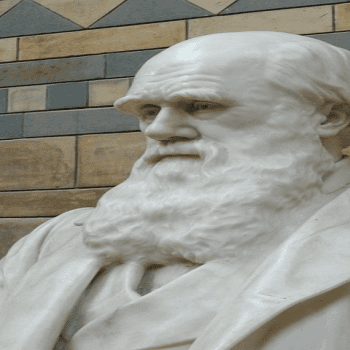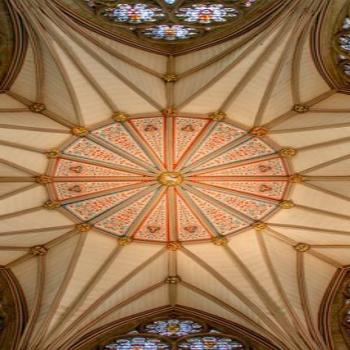
I have long thought that a comprehensive understanding of Catholicism requires at least some basic knowledge of the Old Testament and Judaism. This is as true in Christology as in any other aspect of theology.
In this essay, I want to examine one such connection between the Old and New Testaments: the teaching that Jesus Christ is the new Adam. To do so, I need to discuss biblical typology.
Typology
Biblical typology refers to when a person, event, or thing from the Old Testament foreshadows a person, event, or thing in the New Testament. For example, in the Old Testament, Jonah’s three days in the belly of a whale prefigure Jesus Christ’s three days in the tomb (Matthew 12:38-42). In a similar way, we engage in typology when we suggest that Adam is a precursor to Christ.
One of the more prominent illustrations of this kind of typology occurs in the Epistle to the Romans. In it, Saint Paul writes, “But death reigned from Adam to Moses, even over those who did not sin after the pattern of the trespass of Adam, who is the type of the one who was to come [i.e., Christ].”
The analogy of Christ as the new Adam is found very early in Church history, but what does this claim mean, and what implications does it have on Christology?
Adam: Man or Myth
Any effort to examine whether Adam existed in history must be considered part of the larger context of how the Book of Genesis is to be understood.
In the second chapter of Genesis, we are told of the creation of the first human. “The Lord God formed the man out of the dust of the ground and blew into his nostrils the breath of life, and the man became a living being.” (Genesis 2:7).
Regardless of whether one adheres to a literal interpretation or a metaphorical (and, therefore, spiritual) interpretation, two fundamental truths should be gleaned from the text. The first – and most important – is showing that God created humans. The second truth is that humans are composite creatures born of a physical body (dust of the earth) and a spiritual soul (breath of life).
This second truth is made manifest when it is understood that the name Adam derives from the Hebrew word Adamah, meaning ground, earth, or soil.
Theologically, the importance here is that Adam is meant to represent humankind as God intended it. Because the Fall of Man (that is, the fall of Adam) altered what God had intended, a “new” Adam would be needed to rescue the “old” Adam (human beings in general) from the effects of original sin. Moreover, since the need for a new Adam is predicated upon the existence of original sin, it matters not whether one accepts a literal or metaphorical interpretation of the creation narratives.
The Historical Christ
Catholicism is a historical religion. Many of the events and claims central to Catholicism are found in the historical record. This is true of the faith’s central figure, Jesus of Nazareth.
Regardless of whether one accepts Jesus as God, one is all but obligated to acknowledge the historical existence of the person of Jesus. Obviously, the New Testament attests to His existence in history. More importantly, at least for skeptics, ample extra-biblical evidence supports the claim of a historical Jesus.
I hope that I have provided a sufficient foundation for pursuing the purpose of this essay. To wit, what does it mean that Jesus is the new Adam?
How Is Christ The New Adam?
References to Adam as a historical person appear in several passages in the New Testament. For example, Saint Luke’s Gospel incorporates Adam into the genealogy of Christ (see Luke 3:23-50).
However, the most significant references to Adam are found in Saint Paul’s Epistles. First Corinthians provides the most fruitful data regarding Adam and the connection to Christ. “For since death came through a human being [Adam], the resurrection of the dead came also through a human being. For just as in Adam all die, so too in Christ shall all be brought to life, but each one in proper order: Christ the firstfruits; then, at his coming, those who belong to Christ.” (See 1 Corinthians 15:20-23).
Here, we have the first tangible connection, at least theologically, between Adam and Christ. This is true whether one sees Adam as an actual person or as simply a representation of humankind. As a result of the original sin committed by Adam and Eve (or human beings in general), death entered into God’s creation. This is not the death of the body, which is natural, but rather the eternal separation of the soul from God.
Saint Paul uses an antithesis style to compare Adam and Christ. “The first man, Adam, became a living being, the last Adam [Christ] a life-giving spirit. But the spiritual was not first; rather, the natural and then the spiritual. The first man was from the earth, earthly; the second man, from heaven. As was the earthly one, so also are the earthly, and as is the heavenly one, so also are the heavenly. Just as we have borne the image of the earthly one, we shall also bear the image of the heavenly one.” (See 1 Corinthians 15:45-49).
Where Adam was the father of humanity in the flesh, Christ became the father of humanity in the spirit. Moreover, Christ, in dying and rising, overcomes the effects of original sin. By doing so, He restores humanity (Adam) to their intended state, which is communion with God.
Conclusion
In this essay, I have sought to show why Catholicism considers Adam to be a foreshadowing of Christ. This concept is not an abstract theological discussion. In viewing Christ as the new Adam, we can gain insight, albeit allegorically, into how we understand salvation. For as Adam partook of the tree of good and evil and, in so doing, led humanity into sin, so Christ partook of the Cross and, in so doing, led humanity to redemption.
















